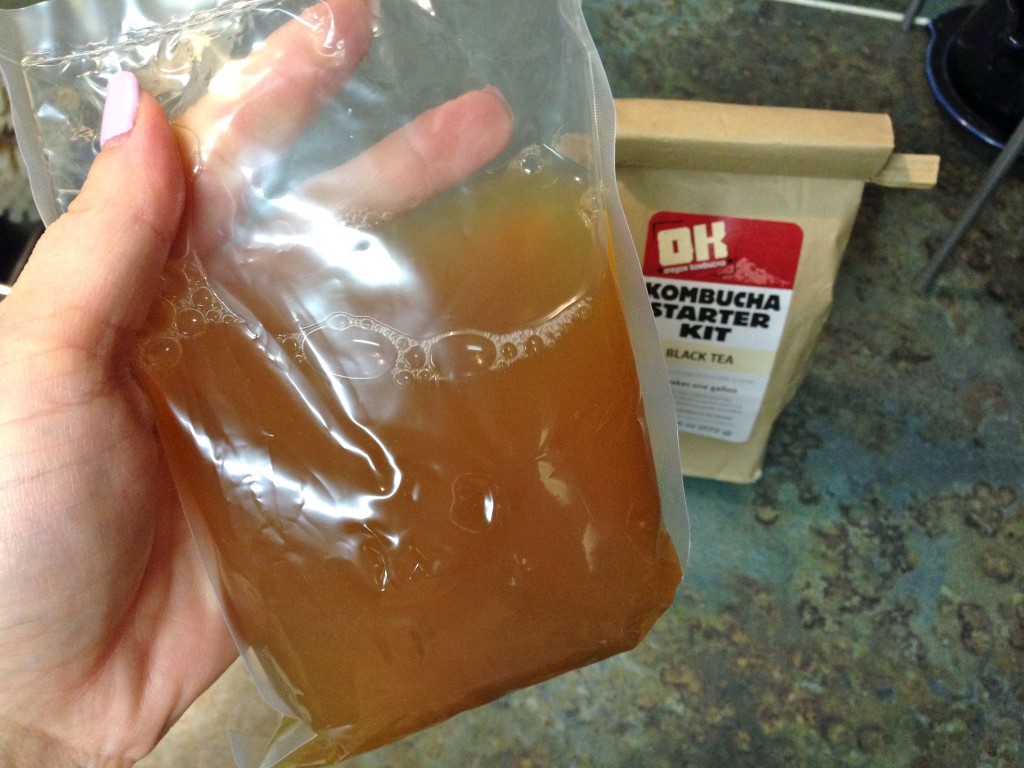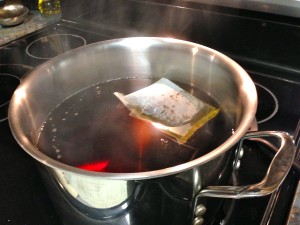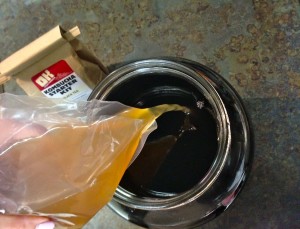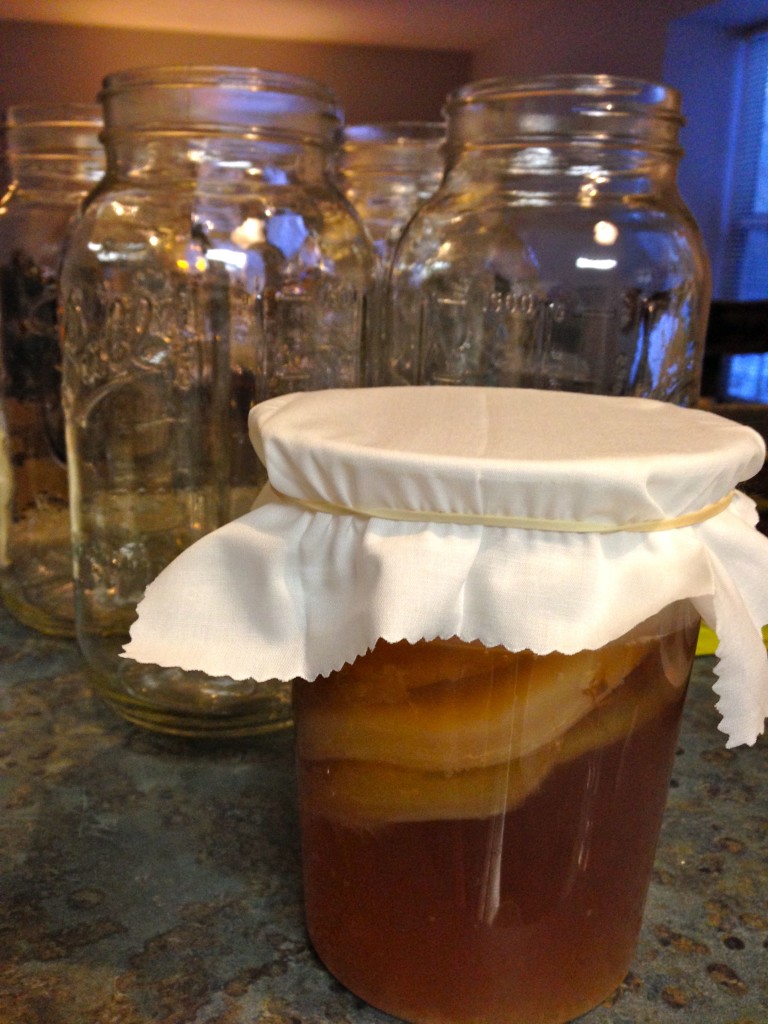 The first time I laid eyes on it I was a little freaked out. Was it an alien life form? Or perhaps a jelly-like creature pulled from the shores of Delaware? And why was it floating in a jar of brown liquid in my best friend’s kitchen?
The first time I laid eyes on it I was a little freaked out. Was it an alien life form? Or perhaps a jelly-like creature pulled from the shores of Delaware? And why was it floating in a jar of brown liquid in my best friend’s kitchen?
Needless to say, it’s taken me some time to get over my initial aversions and fears of kombucha. But since then, I’ve embraced it. It’s fizzy, it’s tart and it’s packed full of those helpful probiotics we talked about last month.
So why didn’t I post this a few weeks ago? Why now … in our month of scary?
Have you seen a SCOBY? It’s ALIVE!
SCOBY is an acronym that stands for Symbiotic Culture of Friendly Bacteria and Yeast. They have a rubbery texture, are off-white in color and are disc-shaped. Like I said … a jelly-like creature! But despite how scary they look, they metabolize the sugar and caffeine in sweet tea to create a beverage filled with probiotics, vitamins, amino acids and enzymes.
Not only does a SCOBY look like something that doesn’t belong in your kitchen, but the process of making kombucha at home can be a bit scary, as well. If something goes wrong or if the SCOBY isn’t healthy, it could make you really sick. If not stored properly the SCOBY can grow mold — this can happen if it’s too cold or not covered properly. In that case, you should immediately throw it out and start over with a fresh one.
Have I scared you enough yet?
I know I was when I got my first SCOBY, from my co-worker Madelyn. She’s become a true convert. Over the last year, she had been experiencing some health issues with no particular diagnosis, other than simply “an autoimmune disorder.” She was exhausted all the time and had soreness and pain all over her body, among various other strange symptoms. She started to look for alternative solutions, such as probiotics, which led to her brewing kombucha at home.
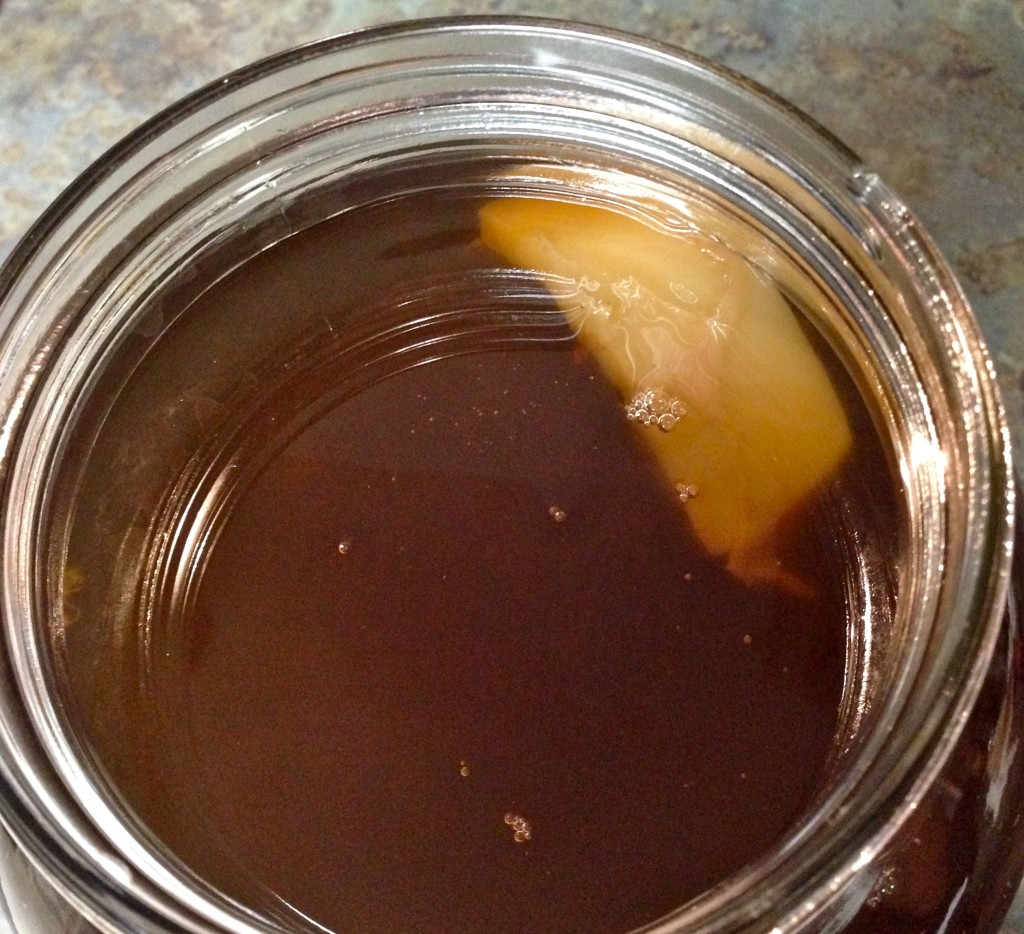 The process of brewing kombucha regularly means that you’ll make new scobies … or monster babies, as I call them. The original SCOBY — the one you start with — is referred to as the “mother.” I got one of Madelyn’s babies.
The process of brewing kombucha regularly means that you’ll make new scobies … or monster babies, as I call them. The original SCOBY — the one you start with — is referred to as the “mother.” I got one of Madelyn’s babies.
And with as much tea as she’s been brewing, I asked her what she’s doing with all those monster babies.
OK … as gross as the whole SCOBY thing is, it can get grosser. Madelyn eats them. She told me that she did a little research, and apparently, there’s no harm in eating the extra ones. There is even a restaurant that uses them in their dishes. After a quick Internet search, I dug up some other culinary uses: SCOBY jerky, SCOBY miso soup or simply SCOBY chopped up and served in a salad. Madelyn even suggested serving some to our puppy, saying it would help strengthen her immune and digestive systems.
I will admit I have tried none of these. I will probably try to make the jerky, as it seems the least scary of all the options. The tips I have read, by the way, say that the SCOBY should not be cooked. Other than dehydration, it should be eaten raw to preserve the probiotics. It has a tangy, sour taste with a texture like squid … so Madelyn tells me.
If you’re still interested in brewing your own monster tea, there are plenty of resources online. You can even order starter kits that come with a brand new SCOBY. Just go to Amazon and run a quick search. You’ll find companies like Kombucha Brooklyn, Oregon Kombucha and The Kombucha Company. Most kits will come not only with the SCOBY but also the tea, the sugar and a gallon jar to get things going.
And check out the sites above for further FAQs and tips. While making kombucha is a straightforward process, if you’re new you may have a lot of questions!
And whatever you do … don’t get the scobies wet. Or, wait — is that gremlins?
Monster Tea … Kombucha
If you know someone who brews at home, simply ask them for a spare SCOBY. Just make sure they give you some of the kombucha liquid as you’ll need that to start your batch. It’s simple to recreate the kits on your own. My instructions are for one gallon, but you can easily adjust for a half-gallon, just cut the amounts in half.Ingredients
1 gallon boiling water
1 cup sugar, organic or regular
10 to 12 tea bags, regular black, green or white
1 cup liquid kombucha
1 live SCOBYEquipment
Long handled metal or plastic spoon, not wooden
Clean, 1-gallon glass container, to brew kombucha
Clean, light weight cloth cover, to cover the brew container (This could be a kitchen towel, paper towel, cloth napkin or cut up t-shirt. Anything that will cover the container, but allow air to pass through.)
Large rubber band or string to keep the cloth cover tight
Clean bottles with tight-fitting lids to store your finished brew
Brew the tea. Boil 1 gallon of water in a large pot. Remove from heat. Add the tea bags and stir. Black tea will complete brewing in 4 minutes, while green or white will brew in 2 to 3 minutes. Add 1 cup of sugar, stirring until dissolved. Pour the hot tea into the brew container. Allow the tea to cool to room temperature. This can take several hours, but it’s extremely important to the brewing process — if you add your SCOBY to the hot tea, it will die. I tend to brew my tea at night, allowing it too cool while I sleep.Add the SCOBY. After allowing the tea to cool completely to room temperature, add 1 cup starter kombucha liquid. If ordered online, the SCOBY should be floating in this liquid. This will help it acclimate to the new environment. Add the SCOBY and cover the container, securing with the rubber band or string.
Wait. Kombucha can take anywhere from 7 to 30 days to brew, depending on your taste and the environment where it is brewed. The fastest temperature it grows in is 80 to 85 degrees. This is nearly impossible to attain in my kitchen, so my kombucha tends to take a little longer. After day 7, begin tasting and taste again every few days until it hits your desired flavor. Essentially, it should be tangy and not taste like tea. The longer you brew, the tangier your brew.Bottle. Transfer the finished kombucha to your bottles, ensuring the lids fit nice and tight. If you want a carbonated, fizzy kombucha, allow the bottles to sit at room temperature for 24 to 48 hours before refrigerating. Refrigeration will stop the fermentation process. The bottles can store for months.
Brew again or store. You can then start a brand new batch of kombucha, following the steps above. To store the SCOBY until you begin a new batch, either leave it floating in a cup of the liquid kombucha covered at room temperature or, for longer-term storage, use a tight fitting lid and store in the refrigerator.


